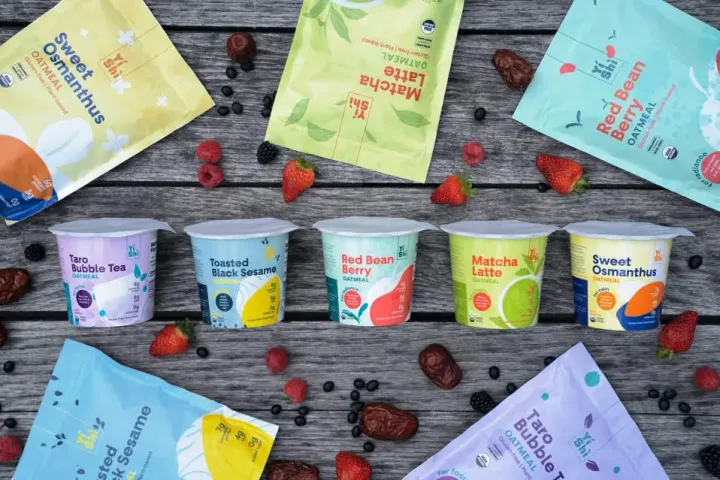Whether you're a food manufacturer, supplier, or trading partner in the supply chain, it’s important to understand the new rule under the US Food and Drug Administration’s (FDA) Food Safety Modernization Act (FSMA) and how GS1 Standards can provide an important foundation for food safety.
By Shane Morris | Business Development Director Ecommerce at GS1 US
What Is the FSMA 204 Food Traceability Rule?
On November 21, 2022, the FDA published a Final Rule titled Requirements for Additional Traceability Records for Certain Foods which implements Section 204(d) of FSMA. This rule is commonly referred to as the “Final Rule.” The Final Rule requires companies to keep additional records for designated foods to protect public health. The additional recordkeeping requirements that the FDA has established are outlined in the Federal Register Notice. The rule was finalized in November 2022 and businesses will have until January 20, 2026, to comply.
The Final Rule establishes a standardized framework for end-to-end traceability throughout the food industry. The new requirements intend to assist the FDA in more rapidly and effectively tracking the movement of certain foods to prevent or mitigate a foodborne illness outbreak and to address potential recalls.
Who is Affected by FSMA 204?
The FDA has identified and published a list of certain foods that are impacted. The Food Traceability List (FTL) is a list of foods that are subject to additional recordkeeping requirements under FSMA Rule 204. The FTL includes but is not limited to:
- Many fresh fruits and vegetables, including all leafy greens, melons, sprouts, cucumbers, tomatoes, peppers, herbs, tropical tree fruits, and all fresh-cut items.
- Cheeses, other than hard cheeses
- Shell eggs
- Nut butter
- Some categories of seafood
- Ready-to-eat deli salads (refrigerated)
The Final Rule outlines cases under which certain foods or persons may be exempt or partially exempt from the requirements in the Final Rule. The Traceability Exemptions Flowchart can assist in determining whether certain foods or persons are exempt from the Final Rule. It’s important to review the Final Rule to determine if you qualify for an exemption.
Some examples of businesses that are exempt include:
- Certain small farms
- Certain small retail food establishments and restaurants
- Foods not listed on the FTL or that have gone through a recall
- Certain bivalves and mollusks are covered by the Seafood Sanitation Program
Who Is GS1 US?
Best known as a source for the Global Trade Item Number (GTIN) and the UPC barcode, GS1 US is a not-for-profit standards organization that facilitates industry collaboration to help improve supply chain visibility and efficiency using GS1 Standards, the most widely used supply chain standards system in the world.
How Will Record Keeping Be Impacted?
If you manufacture, process, pack, or hold any of the foods on the FTL, you are required to keep additional records on these items as per the FDA. The FDA has defined a set of metrics called Key Data Elements (KDEs) that correspond to different events in the supply chain known as Critical Tracking Events (CTEs). The CTEs are:
- Harvesting
- Cooling
- Initial Packing
- First Land-Based Receiver
- Shipping
- Receiving
- Transformation
Some KDEs include but are not limited to the following:
- Traceability Lot Code
- Traceability Lot Code Source
- Quantity and Unit of Measure
- Date of Initial Packing
- And more
Food safety professionals can map KDE information to be captured by the Final Rule directly to GS1 Standards to help meet recordkeeping requirements. For example, a Global Location Number (GLN) is the GS1 identification key that can be tied to the different CTEs to identify a specific product as it's being shipped, cooled, transformed, etc.
For record-keeping requirements, The FDA has outlined these requirements for recordkeeping:
- Keep records as original paper records, electronic records, or true copies (such as photocopies, pictures, scanned copies, or other accurate reproductions of the original records). Electronic records may include valid, working electronic links to the information required to be maintained under this subpart.
- The required records must be made available to an authorized FDA representative, upon request, within 24 hours of such request (or within some reasonable time to which the FDA has agreed.
- Be sure to review the appropriate section of the Final Rule for complete information on Records Maintenance and Availability to determine how your business needs to adapt. More information on how to get started with GS1 Standards for your food safety program is available on the GS1 US Food Safety website.
How can GS1 US help you get started?
The GS1 US Application of GS1 System of Standards to Support FSMA 204 outlines how to use GS1 Standards to help meet the Final Rule requirements and was created in close collaboration with the GS1 US FSMA 204 Workgroup. If you are interested in joining this workgroup, please reach out to foodsafety@gs1us.org for information.
Additionally, the GS1 Standard for Food Traceability Online Certificate Course provides expert guidance on establishing or enhancing your traceability program. For a more personalized approach, GS1 US Advisory Services can offer a combination of technical and business expertise to address specific challenges your organization may face in integrating the GS1 System of Standards into your operations.
GS1 US has teamed up with The Food Industry Association (FMI) to bring you a four-part webinar series on FSMA 204, including topics such as, best practices that support the new recordkeeping requirements, benefits that can be gained from improving supply chain visibility, and so much more. We are covering what FSMA 204 is, how to use industry standards to meet requirements, why being compliant boosts business value, and what’s next and the tools you can use to succeed.
Find additional tools and resources for food safety and learn more about how GS1 Standards can enhance traceability on the GS1 US Food Safety webpage.
NOTE: The use of GS1 Standards is voluntary and not mandatory. It should be noted that use of the words “must” and “require” throughout this document relate exclusively to technical recommendations for the proper application of the standards to support the integrity of your implementation. GS1 US is making this information available as-is without warranty of any kind, either express or implied, including, but not limited to, the implied warranties of merchantability, fitness for a particular purpose, or non-infringement. to be used for educational purposes only. GS1 US remains the sole and exclusive owner of all right, title, and interest in and to the following content and may revoke the right to use this content at any time. This content may not be copied, reproduced, printed, distributed, or published, electronically or physically, in whole or in part, in any and all media, without the express consent of the owner. Each company is individually responsible for meeting all statutory and/or regulatory requirements for their company and their products. Each company should consult with its legal counsel or compliance team (regulatory or quality) for more specific information about current statutory and regulatory requirements applicable to the company and products.
GS1 US employees are not representatives or agents of the U.S. FDA, and the content of this publication has not been reviewed, approved, or authorized by the U.S. FDA. The following information contained herein is for informational purposes only as a convenience, and is not legal advice or a substitute for legal counsel. GS1 US Inc. assumes no liability for the use or interpretation of the information contained herein.



